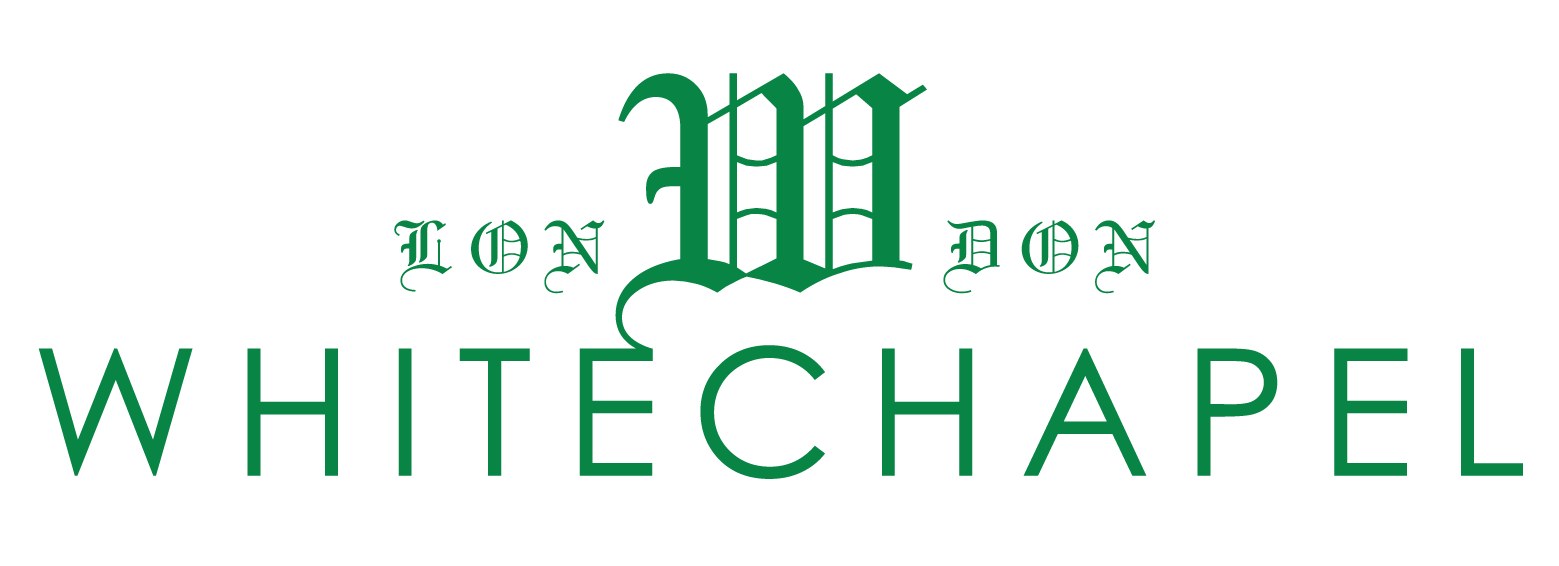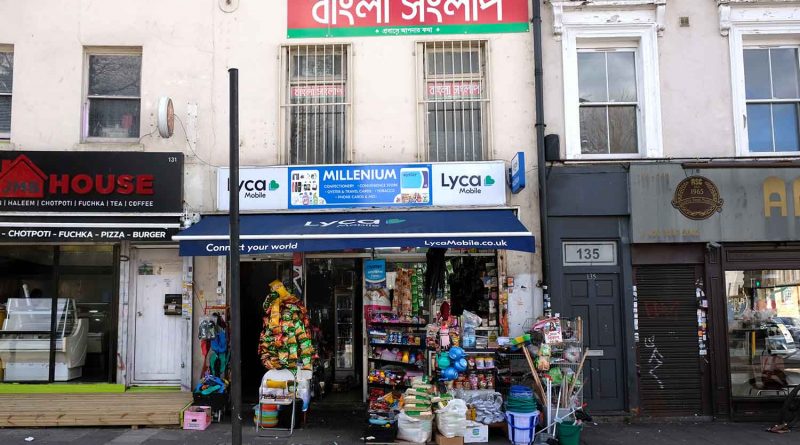How Bengali newspapers in Tower Hamlets are fighting to keep Bangla alive and relevant to a new generation
In the third part of our four-part series on the hidden cost of losing Bangla, we examine the role of Bengali newspapers and whether they are still relevant to the next generation of British Bangladeshis.
Read this series from the start.
Dotted around Whitechapel, tucked above shops and down side streets, there are groups of journalists passionate about informing their community and preserving their language.
They are British-Bangladeshi journalists. They work for one of the six Bengali language newspapers published in Tower Hamlets.
This is a very local industry. Janomot is published just off Brick Lane, Potrika in a small office next to Rinkoff’s Bakery and Bangla Sanglap is published from above a shop just off Whitechapel High Street.
Newspapers are a big part of Bangladeshi culture, explains Emad Choudhury, editor of Potrika: ‘For Bengalis, a newspaper is not just about reading, it’s about arguing.’
A newspaper can become a talking point between friends, colleagues and family.
These newspapers report on both British and Bangladeshi news. It’s a roughly 40/60 split.
But they also have a more subtly important role. They offer British Bangladeshis the chance to read and practice their mother tongue.
‘My mission is to promote [and] to sustain my own language’, says Choudhury. It’s an emotional subject for him and many other British Bangladeshis.
But Bengali language newspapers in Britain are facing a crisis.
Syed Nahas Pasha has edited Janomot, the oldest Bengali newspaper in Britain, for 35 years. His children can’t read and write in Bengali. He thinks his one-year-old grandson will never learn the language.
Some newspapers are adapting to this change. The newer weekly Bangla Sanglap has found a niche by going bilingual and publishing in English and Bengali.
It has two front pages, one in each language.
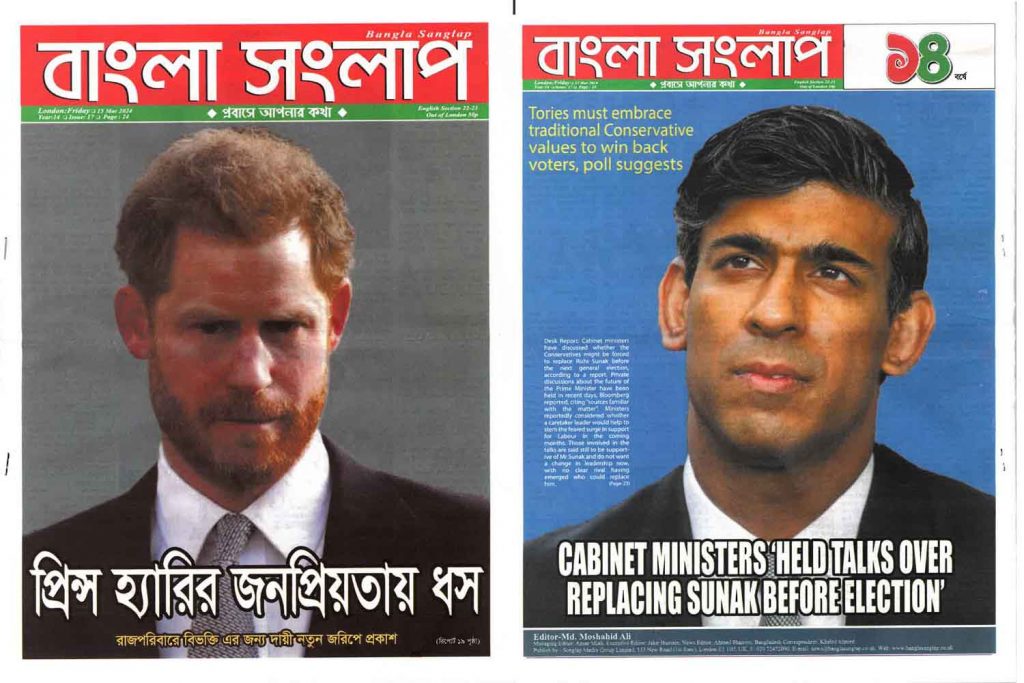
Other more traditional papers, such as the Bengali weekly broadsheet Potrika, are published only in Bengali.
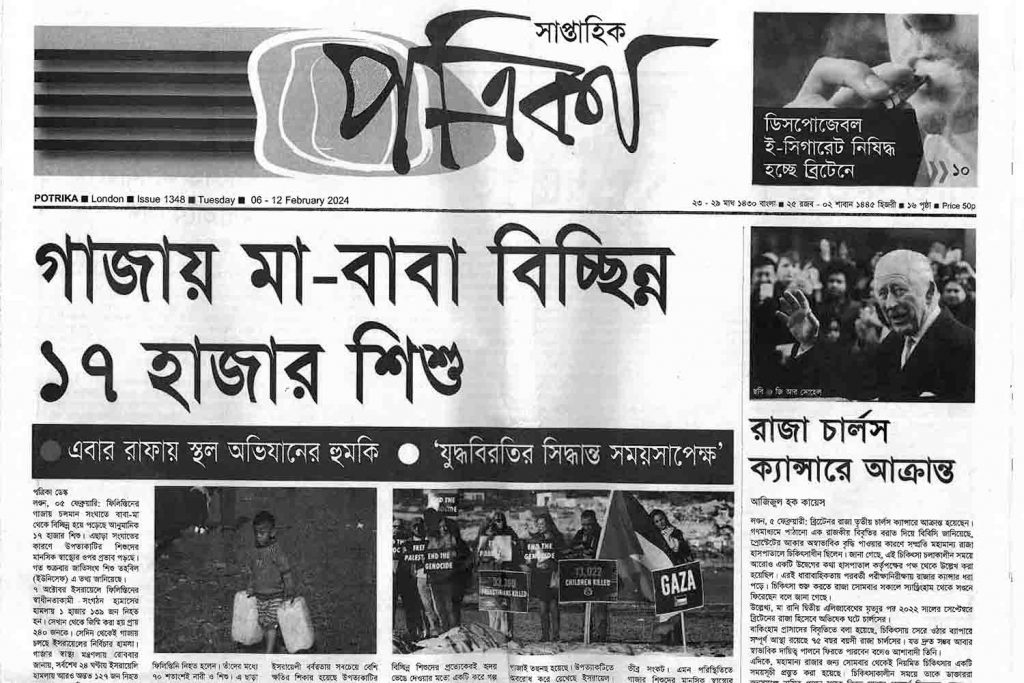
Can Bengali language newspapers still play a role in keeping Bengali alive in Tower Hamlets? Or is it inevitable that they will either disappear with the language or switch to English?
A shift away from publishing in Bengali would end a history that goes back to 1916.
Since then, Bengali newspapers have ‘documented the lives and lifestyles of this ethnic community’, writes historian Faruque Ahmed in his history of Bangladeshi journalism in Britain.
Before the 1970s, Bengali newspapers focused on keeping the British-Bangladeshi community up-to-date with events back in Bangladesh.
Many of the early arrivals to Britain before the 1970s didn’t imagine they would be staying long. Ashraf Hoque, an academic at UCL, explains that early settlers wanted to earn money to send back home to support their families so they could return to a better life.
These early migrants were more interested in the harvest and political situation in Bangladesh than news from Britain, Choudhury says. It made sense for the papers to be in their mother tongue.
‘When they brought their families here, the whole situation changed’, he explains.
Whereas previously 80% of the contents of Bengali papers were dedicated to news from Bangladesh, in the 1970s this shifted to a 60/40 split.
From the 1970s, British Bangladeshis who were permanently settled in Britain wanted to see a reflection of the problems they faced here.
For example, Bengali newspapers were an important part of the anti-racist movement in the 1970s. Covering issues the British-Bangladeshi community cared about at home and abroad in Bengali was a popular combination. Janomot’s peak circulation was in the 1970s and 1980s.
Despite more focus on Britain, reporting on news from Bangladesh in Bengali was still valued by the community. Ahmed says parents wanted their children to learn their language and understand their culture while growing up in a different country.
He writes: ‘They wanted to know how they could raise their children as successful British citizens while also providing them with a profound knowledge of Bengali traditions and culture.’
Keeping the Bengali language alive in Britain is a significant part of this. Bengali newspapers were, and still are, one of the ways that British Bangladeshis could stay in touch with Bengali.
Choudhury wants his paper to allow readers to practise their mother tongue. This is important to many in the community he says: ‘We love our language. There are few nations in this world [whose people] died to protect their mother tongue.’
‘[Parents] wanted to know how they could raise their children as successful British citizens while also providing them with a profound knowledge of Bengali traditions and culture.’
Faruque Ahmed
But Bengali language newspapers face two pressures.
The first is the same pressure all British newspapers face – the younger generation is rapidly turning away from print.
Young people, including British Bangladeshis, are more likely to turn to social media, such as TikTok, Instagram or X (formerly Twitter), to get their news. Forty per cent of 18 to 24-year-olds in the UK get their news from TikTok, according to a study published in February 2024 by strategic communications firm Charlesbye.
British-Bangladeshi TikTokers, such as Ali Official, have gained a large following in recent years.
At the same time, the circulation of UK regional daily print newspapers fell by an average of 19% in the second half of 2023 alone, according to figures from the Press Gazette.
On top of this, Bengali newspapers face another pressure. Many of the next generation of British Bangladeshis cannot comfortably read the language they are published in.
These fears are not new. Choudhury tells me that when he started working at another newspaper Surma in 1990, there were fears that kids were not learning enough Bengali to be future readers. Yet the number of Bengali newspapers grew from three to six over the next 20 years.
But as the previous two articles of this series have discussed, there appears to be something different happening in the 2020s.
Moshahid Ali, the editor of Bangla Sanglap, has seen this shift coming. He says there are two types of people in the British-Bangladeshi community: older people born in Bangladesh with limited English skills and younger people born in the UK who aren’t confident in Bengali.
By being bilingual, Bangla Sanglap aims to serve both parts of the community and to help the next generation understand Bangladeshi culture and language. This is especially important as many of them have never visited the country, Ali adds.
He says it is the older generation’s ‘responsibility’ to make sure that the younger generation engages with the Bangladeshi part of their identity.
But Ali also sees a place for the British part of their identity: ‘We need both languages, English and Bengali.’ This is why he decided to start a bilingual newspaper. He wants all British Bangladeshis to be able to enjoy Bangla Sanglap. He prioritises ‘community news’ which he thinks is most needed by his readers. Alongside, he also publishes historical and heritage stories to help educate the newer generation.
Ali hopes that by publishing in both languages and focusing on stories relevant to the community his newspaper will stay relevant to the next generation.
However, only 10% of Bangla Sanglap’s readers are under 30 years old. The vast majority are aged 31-50.
Ali’s strategy does not appear to be working just yet. Indeed, the paper’s English section is usually much smaller than the Bengali section. It remains to be seen if Bengali newspapers are sustainable if they cannot attract more people from this younger generation.
Choudhury says that a large number of Bangladeshi students and European Bangladeshis, who tend to speak better Bengali, moving to Britain recently has generated more interest in the newspapers.
However, young people are practising less and ‘this is not good news’. He says that this is due to the Bengali language provision in schools being ‘dismantled systematically’ and the disappearance of supplementary schools.
Potrika’s weekly circulation is 5,000, while Bangla Sanglap’s is 25,000. But Choudhury remains confident about the future. ‘We are still surviving’, he says.
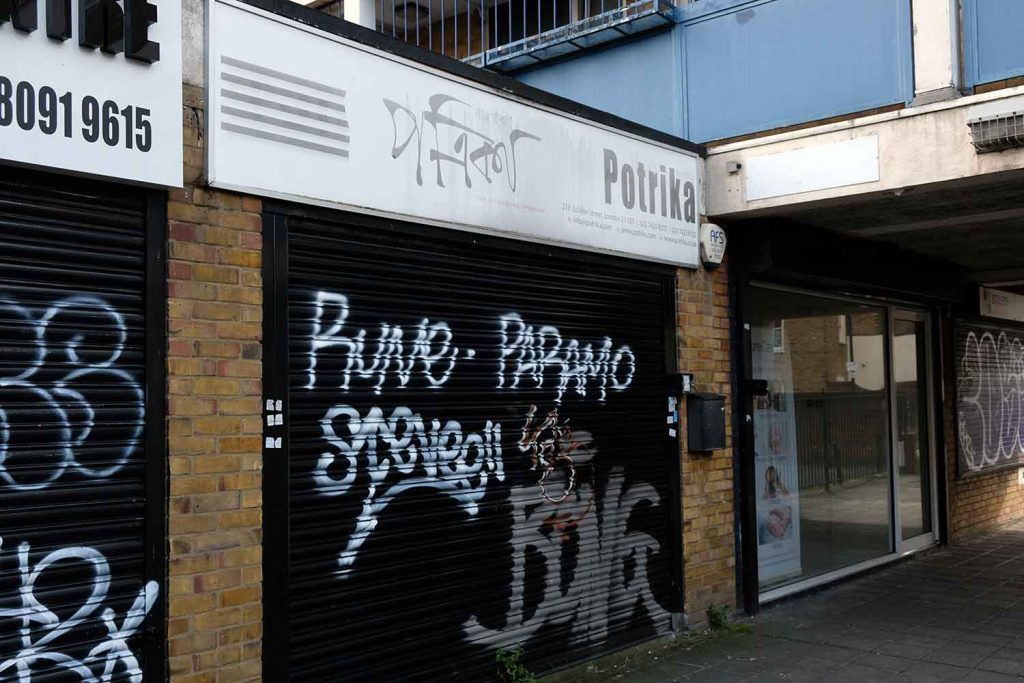
Young people still want to engage with the Bangladeshi part of their identity. What’s unclear is whether they will do so through traditional newspapers printed in a language they can’t comfortably read or speak.
Despite the efforts of passionate editors like Choudhury and Ali, it’s difficult to see how their newspapers can change this trend.
This could spell trouble for Bengali newspapers unless they embrace this change.
In the final of our four-part series on the hidden cost of losing Bangla, we examine a creative sector where young people are keeping Bengali and Sylheti alive.
